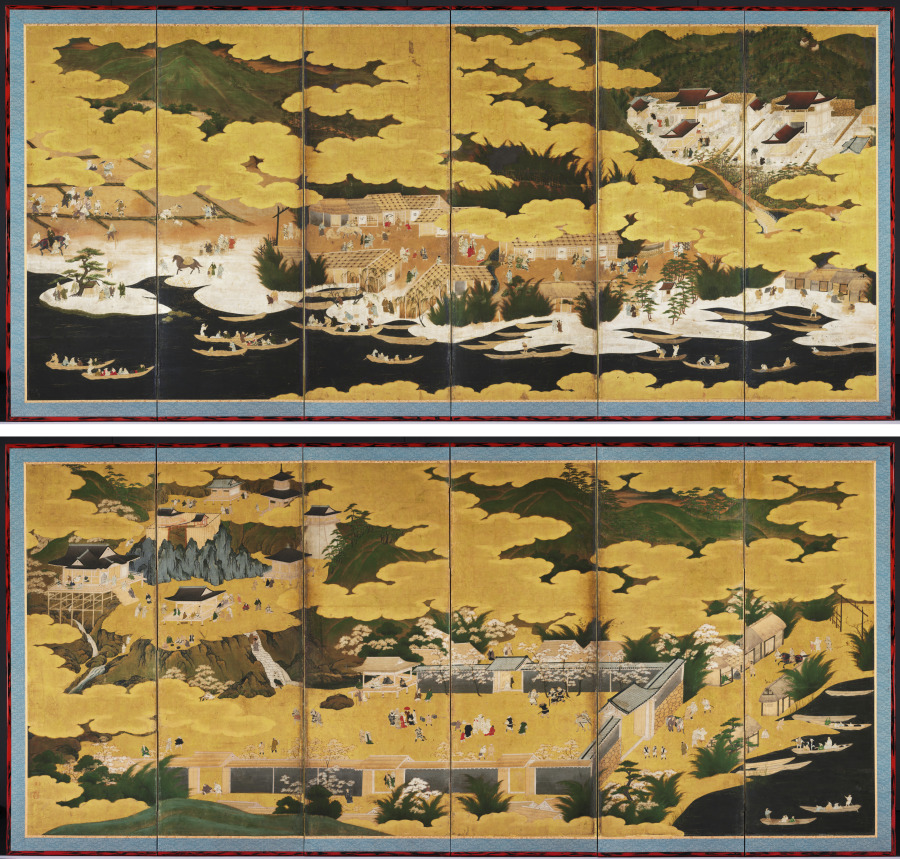| schema:description 10 | "tombstone: Famous Views of Ōmi, 1660s-90s. Japan, Edo period (1615-1868). Pair of six-fold screens, ink and color on gilded paper; overall: 170 x 336 cm (66 15/16 x 132 5/16 in.). The Cleveland Museum of Art, Purchase from the J. H. Wade Fund 1983.19...(more)" |
| schema:description | "id: 151342" |
| schema:description | "collection: ASIAN - Folding screen" |
| schema:description | "digital_description: Ōmi is an area around Lake Biwa near Kyoto. The Buddhist temples Onjōji and Ishiyamadera are in the upper right and upper left of the composition, respectively. At center is the pilgrimage route, and people in the town before the temple gates. Harvested rice fields at right and cherry blossom trees in flower at left show seasonal change from winter to spring....(more)" |
| schema:description | "measurements: Overall: 170 x 336 cm (66 15/16 x 132 5/16 in.)" |
| schema:description | "wall_description: These byōbu vividly portray the shores of Lake Biwa, located near Kyoto, and take a bird's-eye view of verdant landscapes rendered with richly toned hues of thick mineral pigments. The foliage detail and emphasis on its size, shape, and placement offer a visual reading of the composition from right to left. Eschewing Western perspective the images proceed from the impressive Shinto shrine set deep in one of the mountain villages, along the shoreline, and past rice fields, ending in the left screen whose entire six panels present the Ishiyama-dera temple compound. The blossoming cherry trees indicate that it’s late March-early April, and billowing gold-foil clouds help propel the eye toward the compound’s elevations, enclosures, and spaces, particularly the huge well-known, blue-green boulders said to have come from China. The temple's fame, however, is as the friendly domicile for Murasaki Shikibu, the eleventh-century author of <em>The Tale of Genji</em>....(more)" |
| schema:description | "creditline: Purchase from the J. H. Wade Fund" |
| schema:description | "type: Painting" |
| schema:description | "culture: Japan, Edo period (1615-1868)" |
| schema:description | "technique: pair of six-fold screens, ink and color on gilded paper" |

